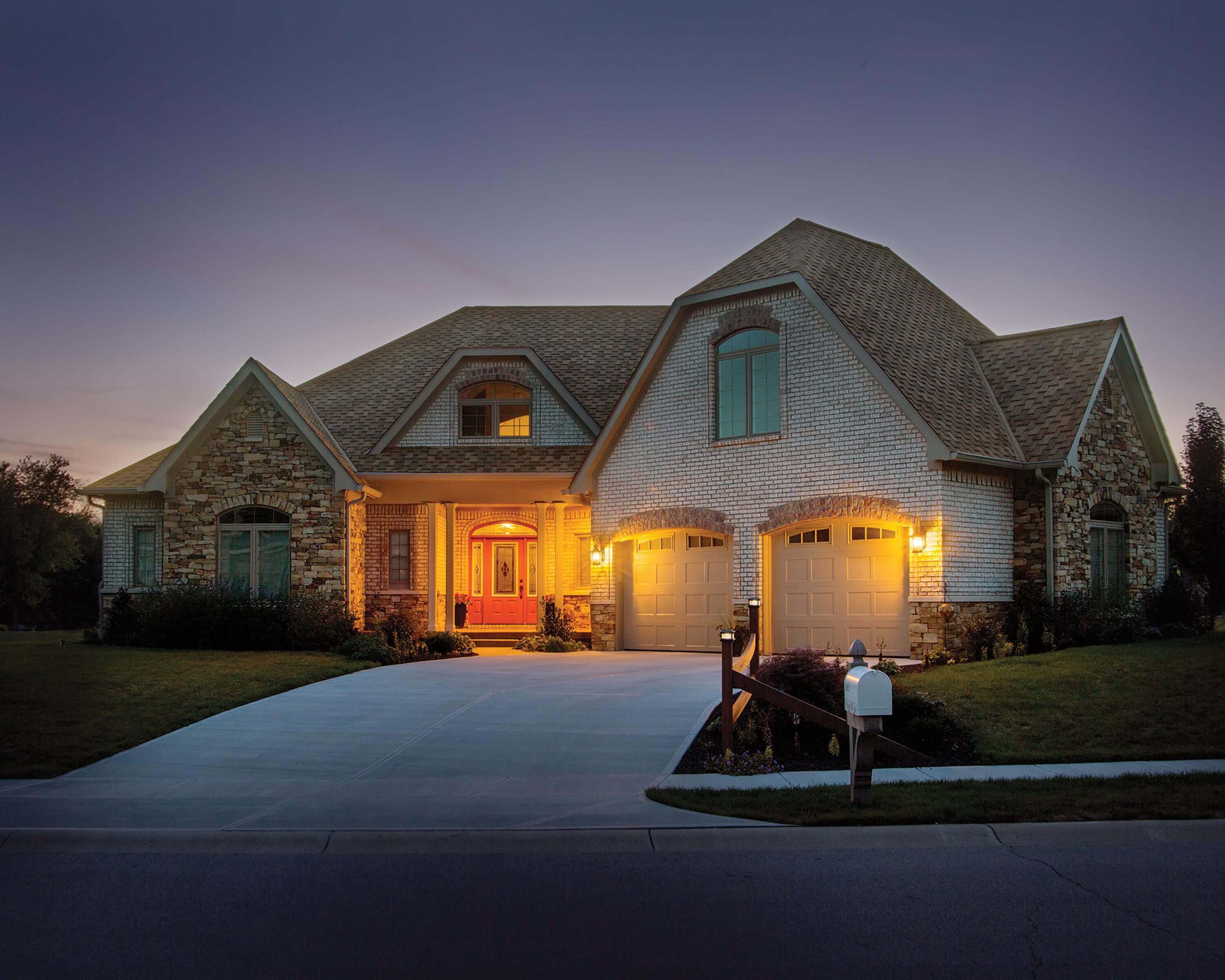With choice, though, comes the potential for confusion. Which material makes the most sense for the project at hand?
This article provides information about two of the more common types of roofing material: metal panels and asphalt shingles. Read on to learn about the differences and similarities so you can help your clients make an informed decision.
Melting Down Metal Myths
Metal roofing has grown in popularity over the past 30 years, and with good reason. The material is extremely durable, so it lasts for up to 50 years. It is also recyclable and helps keep buildings cooler in summer by reflecting heat.
All that said, homeowners might have concerns about metal. One worry: cost. Perhaps property owners have heard that metal is substantially more expensive than asphalt shingles. When it comes to price, however, “the entry level of metal roofing is very close to good quality shingle roofing,” says Tom Main, Territory Manager for central Ontario with Vicwest, a metal roofing provider. Prices can be as low as $1 per square foot.

The cost can vary substantially, though. “There’s so much variety,” Main says. “For instance, the thickness can differ. The thicker the gauge, the more expensive it gets. And the finish varies, too. You can go from a regular paint finish to metallic and highend finishes.”
Heavier metal tends to be more expensive. This higher-end option resists “oil canning,” which describes the ripples that thinner metal can exhibit when installed in large panels. Large panels may be just what your homeowner is after. They replicate the look of older heritage buildings, which often sport long and wide expanses of metal on the roof.
As an installer, you might prefer to use thick-gauge metal, too, although for a different reason. “You don’t need to be as worried about the material bending or kinking during installation and handling,” Main points out. At the upper end of Vicwest’s portfolio, the batten-style Prestige metal roofing comes in 16-inch or 20-inch wide panels, cut in custom lengths of up to 40 feet. Prestige uses either 26-gauge or heavier 24-gauge steel. On the budget end of the spectrum, Vicwest’s relatively inexpensive Ultra-Vic panel is 36 inches wide and up to 36 feet long, using thinner 29-gauge steel. (Note that the thicker the metal, the lower the gauge number.)
As for finishing options, metal roofing comes in a range of colours and styles to match various preferences. If a homeowner wants the durability of metal combined with the look of slate, tile or asphalt shingles, the property owner might want to look into stone-coated metal. It gives steel the style of stone, but it maintains the benefits of metal: endurance and longterm cost effectiveness.
Metal is becoming popular because it speaks to a particular demographic reality, Main says: many homeowners are now in their retirement years and they would rather not have to replace another roof in their lifetime. “We hear that often: ‘This is my last roof,’” he says.
Asphalt Advancement
Metal roofing certainly has advantages, but many homeowners still prefer asphalt shingles. The Canadian Asphalt Shingle Manufacturers’ Association points out that property owners have been using this type of roofing since the 1840s. Over the years, the product has evolved as manufacturers applied research and innovation to improve the performance and style of their wares. Today, multi-layered shingles known as laminate or architectural shingles offer a range of colours and textures for various tastes.
IKO is one company that offers such shingles. Even though the product has its roots in the 19th century, it has come a long way since then. For instance, IKO recently introduced Dynasty, a new shingle that boasts what the manufacturer calls the Armour-Zone feature, a tear-resistant band that creates an enlarged and durable nailing area. The upshot: faster, easier installation, as well as enhanced fastening strength over a greater surface area to help ensure the shingles stay put, even in high winds.

“Another feature is our Fast-lock sealant strips, which are thick and aggressive to promote a strong bond between shingle courses,” says IKO Corporate Communications Manager Derek Fee. “Plus, for high-wind applications, Dynasty shingles require only four nails per shingle to properly install compared with the typical six nails for most shingles, providing even greater project savings.”
Dynasty is an update for IKO’s line of laminate roofing products, “another option for contractors that carries all of the standard benefits of laminates, with the added feature of easier installation and enhanced wind resistance,” Fee says. “In addition, it gives the consumer the upgraded look of our high-definition colours as an alternative to the standard fare in the market place.” Dynasty comes in seven colour combinations that present rich greys, browns, reds and blues for a swath of choices.
Today’s asphalt shingles also last longer than earlier versions. IKO’s Dynasty comes with a limited lifetime warranty, which also includes a 15-year “iron clad” period, during which IKO covers the cost of material and labour to reinstall the product in the event of a manufacturing defect.

In conclusion, metal panels and asphalt shingles each have their pros and cons. Metal is especially long lasting, but can cost more up front. Asphalt is more durable than it has ever been and it tends to be less expensive than metal. Even when it comes to the high-end options, however, homeowners should plan to replace asphalt shingles within 20 years or so. The homeowner’s budget will play a big role in the decision. Whether your clients decide to install metal or asphalt, they have a wide range of styles and colours from which to choose.
